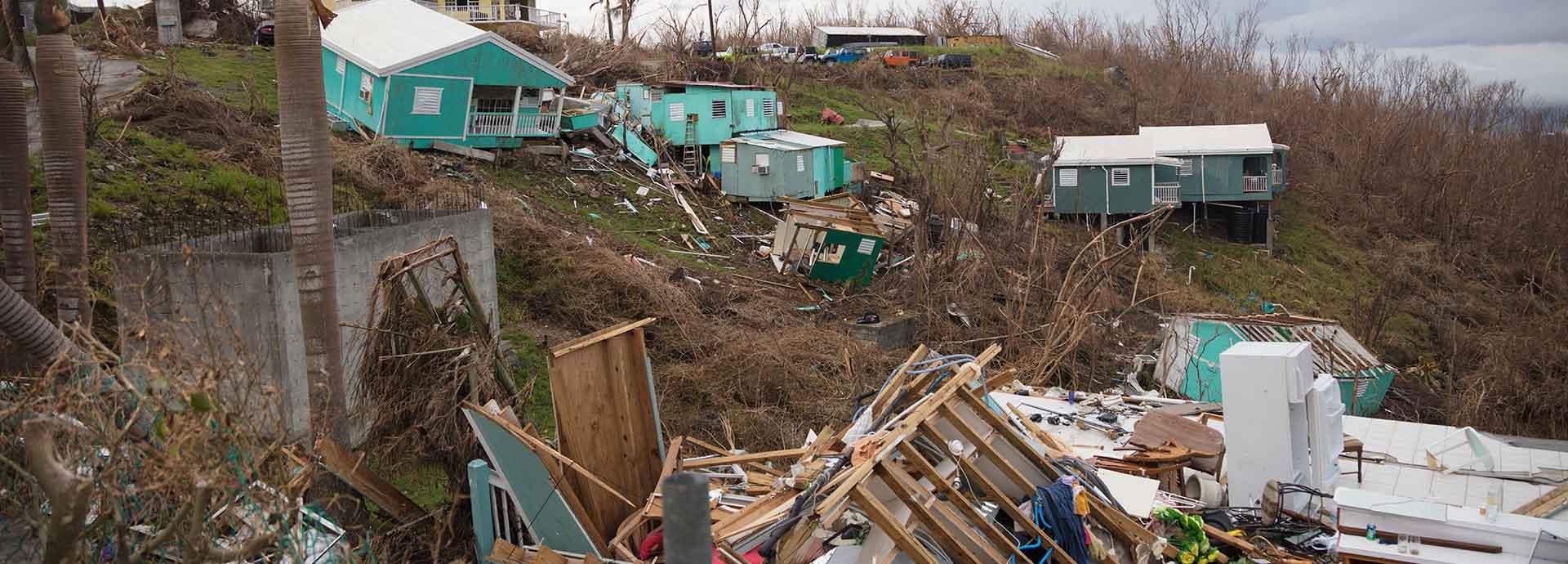

The Caribbean islands have been reeling under the severe aftermath of two deadly hurricanes - Irma & Maria. Lives have been lost, islands wiped out, and critical infrastructure like utilities destroyed. So what will it take to power-up a stronger and more resilient Caribbean? Let’s find out.
There’s an uneasy calm after the recent hurricanes in the Caribbean. Even as help pours in from all quarters, life is literally being rebuilt brick-by brick. In the meantime, millions of people will have little or no access to essentials like water, gas drinking water & electricity.
Energy supply in several islands like Puerto Rico, St. Maarten, Anguilla, Dominica, Turks & Caicos Islands, British Virgin Islands and the US Virgin Islands has reduced to a trickle as transmission & distribution systems are severely damaged impacting key facilities like healthcare and communication. Moody’s estimates suggest that the financial cost of Hurricane Maria alone is around USD 40 billion in terms of lost economic output due to loss of power, roads and communications, and up to USD 55 billion in property damage.
Catastrophe-modeling firm AIR Worldwide is also reported to have estimated that Hurricane Irma caused USD 32 billion to USD 50 billion in insured losses in the U.S. and the Caribbean and insured losses due to hurricane Maria in the Caribbean may range between USD 40 billion and USD 85 billion. Insured losses are barely a fraction of the total economic loss in the Caribbean because the region has a lower rate of insurance take-up.
Lighting up a million lives
The financial implications of the damage are huge and the Caribbean is in dire need of big-ticket investments in utilities and the energy sector. Fortunately, financial aid is pouring in and investors are queuing up. For instance, Wärtsilä, which has an installed base of over 3000 MW in the region (the majority of that capacity with regional electric utilities), has lent a helping hand by donating USD 50,000 to Caribbean Electric Utility Services Corporation (CARILEC) for supporting its members to recover from the recent hurricanes.
“Rapid repair and rebuilding work to the T&D system is key to restoring power first to critical services such as hospitals and then to consumers at large. CARILEC has always been at the forefront as the coordinating agency to provide assistance to member utilities that need help in getting their T&D systems back on track,” says Rodney George, Vice President - Caribbean Wärtsilä Energy Solutions.
Wärtsilä Services has also been deployed in some of the affected islands to assist with restarting Wärtsilä-powered generating plants which fortunately did not suffer significant damages.
In the wake of these two destructive hurricanes, all eyes are set on battery-based solutions as a way to make the electric systems on these island utilities more resilient. In the same vein, Virgin Group’s Richard Branson is reportedly mobilising the world’s top multilateral lenders and foundations to set up a fund to finance what he calls the Disaster Recovery Marshall Plan for the Caribbean. The plan aims at rebuilding the energy sector by replacing fossil-fuel power grids with renewable energy systems that can withstand extreme weather and boost economic development in the Caribbean.
Off-the-grid solutions
But these are long-term solutions and will require years in the making. Rebuilding the power sector in the current circumstances is a race against time because speed and efficiency will impact the lives of millions of people on these islands on a day-to-day basis.
Take the case of 85% of Puerto Rico, which had no electricity until mid-October last year. During a recent news conference, Puerto Rico Gov. Ricardo Rossello stated that his goal was to restore 30% of the island's power by the end of October, 50% of it by November 15 and 80% by December 1, 2017. But many experts were of the view these targets were too ambitious to be achieved in the stated timeframe. They pointed out that the power infrastructure in Puerto Rico was in shambles even before the hurricane and therefore it will take at least six months to restore power to the pre-hurricane levels.
“The key factor here is speed. In the aftermath of a hurricane, particularly in a small island setting, typically, the entire island will be without power, and restoration efforts have to be well planned and executed. The logistics do not only involve moving qualified and experienced personnel but also specialised vehicles and special tools have to be brought in quickly,” explains George.
Experts point out that that there is no single solution or agenda that will help rebuild a more resilient power sector in the Caribbean as quickly as possible. The region can’t be dependent on renewables alone as electricity supply is intermittent in nature. The need of the hour is to have reliable electricity supply that can meet growing demand.
That is only possible through an optimal mix of turnkey solutions like ultra-flexible and efficient smart power plants, which can easily switch between heavy fuel oil (to start with) and liquefied natural gas (LNG) (later), utility scale solar PV, energy storage & integration solutions. This is where global energy majors like Wärtsilä can play a leading role.
Did you like this? Subscribe to Insights updates!
Once every six weeks, you will get the top picks – the latest and the greatest pieces – from this Insights channel by email.

